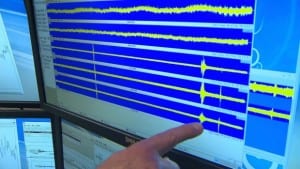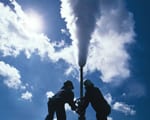“Power Plays” workshop, in Dallas May 19-20, is SMU Geothermal Laboratory’s seventh international energy conference and workshop
Southern Methodist University’s renowned SMU Geothermal Laboratory will host its seventh international energy conference and workshop on the SMU campus May 19-20. The conference is designed to promote transition of oil and gas fields to electricity-producing geothermal systems by harnessing waste heat and fluids from both active and abandoned fields.
More than 200 professionals – ranging from members of the oil and gas service industry, reservoir engineers, to geothermal energy entrepreneurs, to lawyers – are expected to attend “SMU Power Plays: Geothermal Energy in Oil and Gas Fields” Topics of discussion will include:
Power generation from flare gas Power generation from waste-heat and geothermal fluids Research updates on induced seismicity, as well as onshore and offshore thermal maturation Play Fairway Analysis – a subsurface mapping technique used to identify prospective geothermal resources Technology updates
Researchers from SMU’s Roy M. Huffington Department of Earth Sciences will present results from their Fall 2014 Eastern North American Margin Community Seismic Experiment (ENAM CSE) research. In addition, equipment such as one-well systems, desalination and other new technologies will be explored. SMU geothermal conference remains open and walk-up attendees will be accommodated.
SMU has been at the forefront of geothermal energy research for more than 45 years, and the Geothermal Laboratory’s mapping of North American geothermal resources is considered the baseline for U.S. geothermal energy exploration. Geothermal Laboratory Coordinator Maria Richards and Emeritus Professor David Blackwell have seen interest in geothermal energy wax and wane with the price of oil and natural gas.
But Richards believes current low oil prices will drive more interest in geothermal development, encouraging oil and gas producers to use geothermal production from existing oil and gas fields as they try to keep them cost-effective for petroleum production at 2015 prices.
The technology that will be examined at the conference is relatively straight-forward: Sedimentary basins drilled for oil and gas production leave behind reservoir pathways that can later be used for heat extraction. Fluids moving through those hot reservoir pathways capture heat, which at the surface can be turned into electricity, or used downhole to replace pumping needs. In addition, the existing surface equipment used in active oil and gas fields generates heat, which also can be tapped to produce electricity and mitigate the cost of production.
“Oil and gas drilling rig counts are down,” Richards said. “The industry has tightened its work force and honed its expertise. The opportunity to produce a new revenue stream during an economically challenging period, through the addition of relatively simple technology at the wellhead, may be the best chance we’ve had in years to gain operators’ attention.”
Featured speakers include Jim Wicklund, managing director for equity research at Credit Suisse, who will speak on “Volatile Economics in the Oil Field,” and Holly Thomas and Tim Reinhardt from the U.S. Department of Energy’s Geothermal Technologies Office. STW Water Process & Technology, a water reclamation and oilfield services company, will have desalination equipment on-site for attendees to understand size and scaling capacity of water purification for oil field operators.
Information and registration is available at www.smu.edu/geothermal. — Kimberly Cobb
Follow SMUResearch.com on twitter at @smuresearch.
SMU is a nationally ranked private university in Dallas founded 100 years ago. Today, SMU enrolls nearly 11,000 students who benefit from the academic opportunities and international reach of seven degree-granting schools. For more information see www.smu.edu.
SMU has an uplink facility located on campus for live TV, radio, or online interviews. To speak with an SMU expert or book an SMU guest in the studio, call SMU News & Communications at 214-768-7650.

 17 million-year-old whale fossil provides 1st exact date for East Africa’s puzzling uplift
17 million-year-old whale fossil provides 1st exact date for East Africa’s puzzling uplift SMU analysis of recent North Texas earthquake sequence reveals geologic fault, epicenters in Irving and West Dallas
SMU analysis of recent North Texas earthquake sequence reveals geologic fault, epicenters in Irving and West Dallas Bitcoin scams steal at least $11 million in virtual deposits from unsuspecting customers
Bitcoin scams steal at least $11 million in virtual deposits from unsuspecting customers Teen girls report less sexual victimization after virtual reality assertiveness training
Teen girls report less sexual victimization after virtual reality assertiveness training Women who are told men desire women with larger bodies are happier with their weight
Women who are told men desire women with larger bodies are happier with their weight Fossil supervolcano in Italian Alps may answer deep mysteries around active supervolcanoes
Fossil supervolcano in Italian Alps may answer deep mysteries around active supervolcanoes

 Most likely cause of 2013-14 earthquakes: Combination of gas field fluid injection, removal
Most likely cause of 2013-14 earthquakes: Combination of gas field fluid injection, removal Physicists tune Large Hadron Collider to find “sweet spot” in high-energy proton smasher
Physicists tune Large Hadron Collider to find “sweet spot” in high-energy proton smasher
 SMU geothermal scientist Maria Richards to guide global energy organization
SMU geothermal scientist Maria Richards to guide global energy organization